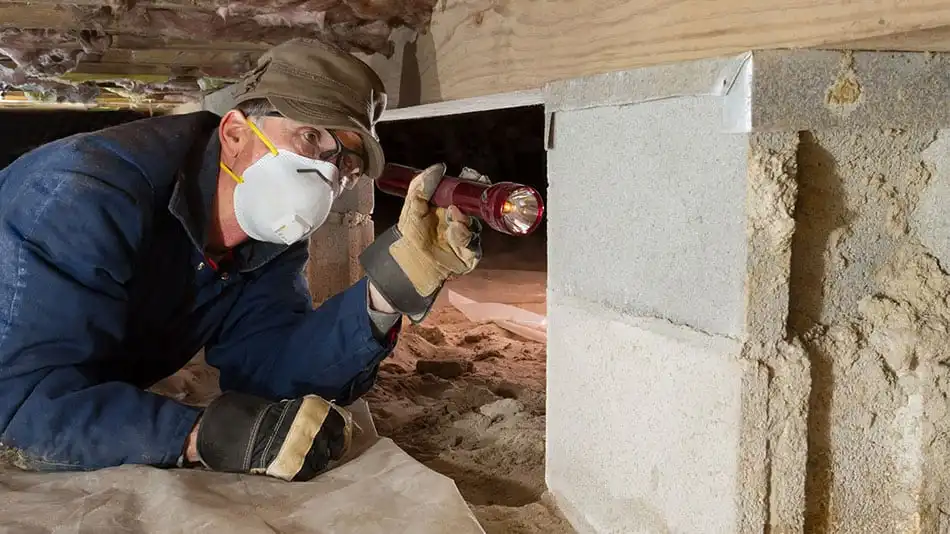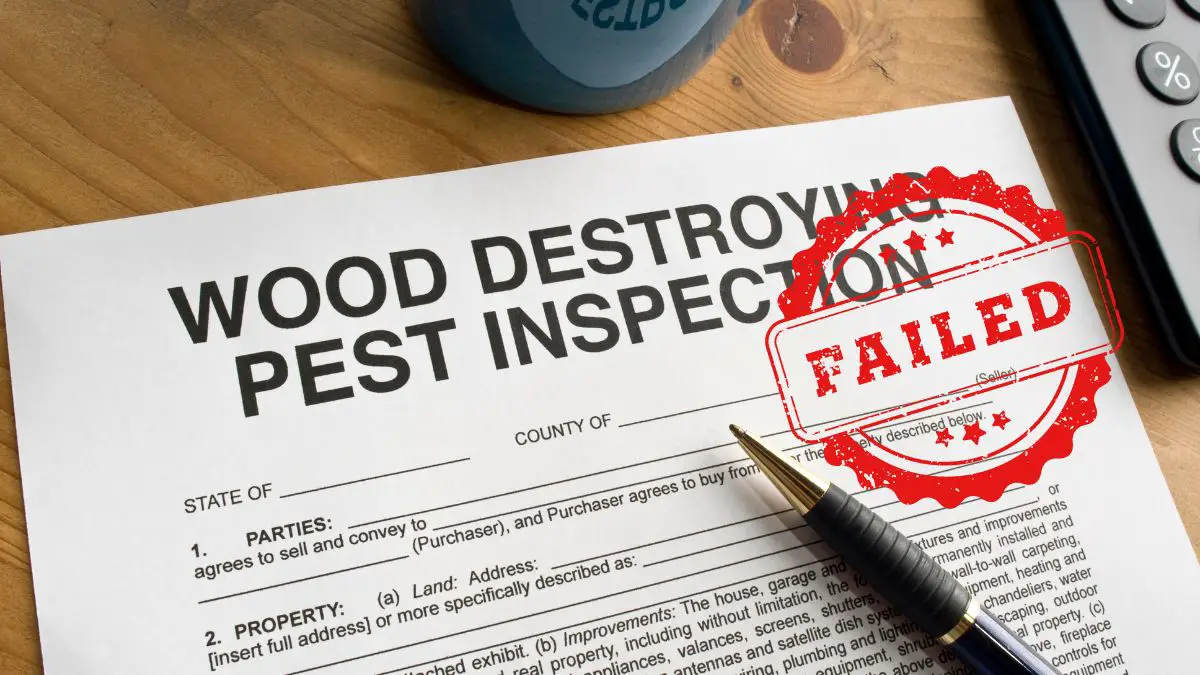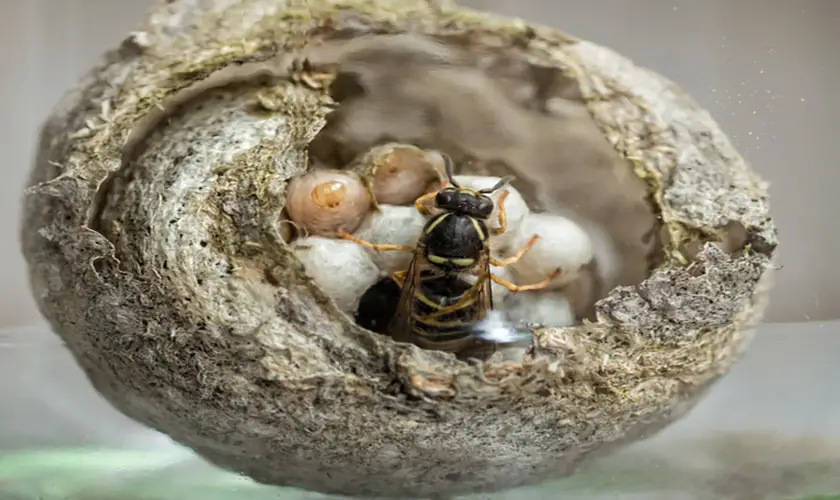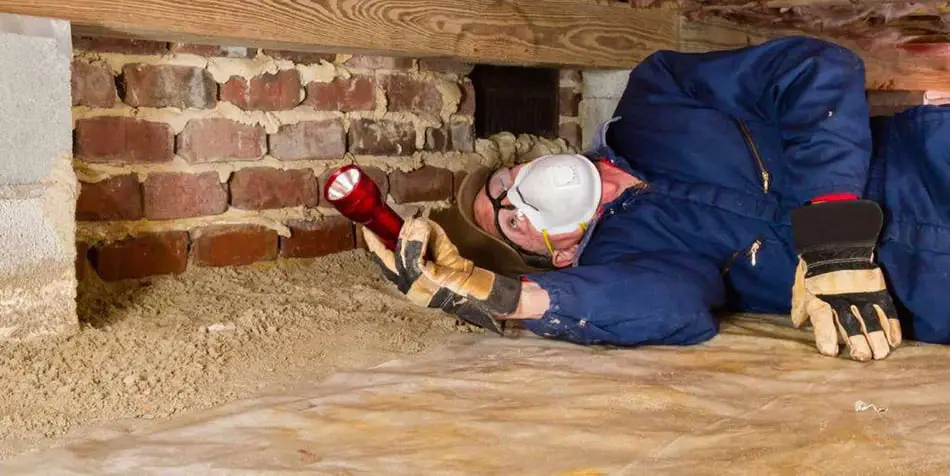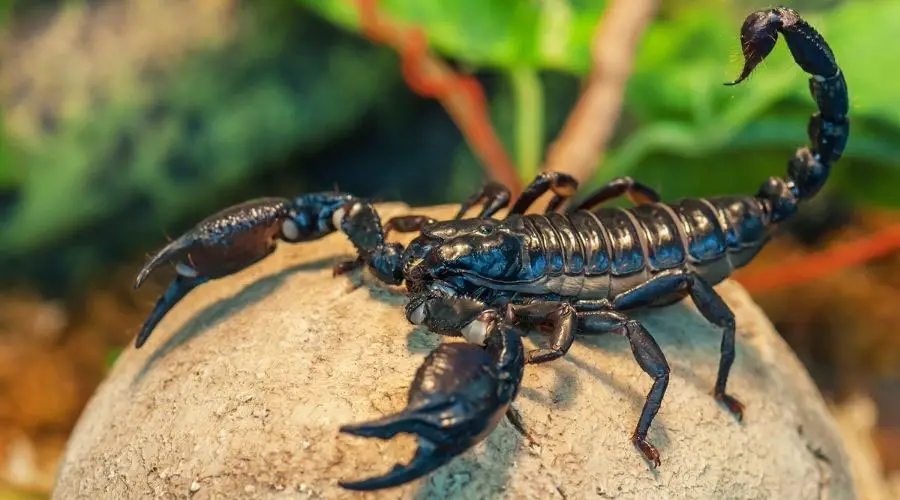
Scorpions are eight-legged creepy crawlies with a pair of grasping pincers at the front and a segmented tail bearing a stinger. They are part of the same family as spiders, the arachnids. Finding one in the home is never a delight, but only a handful are dangerous to people.
Get pets and children out of the way if you find a scorpion in the home. Coax it with a broom into a jar or can and set it free outside. Otherwise, carefully place a heavy bowl over it and call pest control. If it is on the ceiling, attach duct tape to a broom with the sticky side up to get it down.
Finding a scorpion in your home can be a startling experience, especially if you do not encounter them regularly. Knowing what to do when you discover one in your home can make the difference between having an uneventful experience with the scorpion or a rather painful one.
Get FREE quotes from licensed pest control technicians in your area today. Whether you need spraying for ants, roaches, spiders, ticks, mosquitos, or bed bugs, We Can Help! All technicians are screened, licensed, and insured.
Things That Attract Scorpions
Understanding what attracts scorpions will give you a better understanding of why they are entering your home in the first place. This will provide you with ideas about how you can prevent them from seeking to move in with you.
- Prey animals attract scorpions. Small scorpions hunt insects such as cockroaches, silverfish, crickets, and beetles, while the bigger ones can also eat small lizards, mice, and other scorpions.
- Scorpions love the dark. They are nocturnal so seeing one in the day is unusual. Cracks in walls and floors, chinks in window frames, and doorframes are a scorpion’s favorite places to enter your home. Fill them in.
- Scorpions need hiding places. Being desert animals, scorpions are opportunists regarding food and shelter. They will set up shop under just about anything, so de-clutter your house.
- Scorpions get thirsty just like the rest of us, so they sometimes enter the home searching for water. This explains why you may find them in the bathroom, basement, laundry, or kitchen sink.
What to do When You Encounter a Scorpion in Your Home
When you see a scorpion in your home, the first thing to do is to avoid panic and take rushed, unplanned drastic action that could result in being stung.
The next step is to clear the area of pets that may get in the way while you try to deal with the scorpion. Small children should also be removed from the danger zone and told to keep their distance.
The easiest and simplest method of dealing with the scorpion is to use a broom to coax the little creature into a jar, can, or cardboard box.
Once in the container, carefully carry the scorpion outdoors to a far part of your garden and gently shake it out into the shrubs or grass. There the scorpion can continue to live safely and control insect pests in your garden.
Some people are afraid of scorpions in much the same way that others are afraid of spiders. Use this simple tactic if you are in this category and cannot see yourself getting that close to the scorpion.
Place a cardboard box over the scorpion to prevent it from escaping and taking refuge in a crack or crevice where it cannot be reached. Then give your local pest control company a call to come and relocate the scorpion.
Scorpions are climbers, and you may spot a scorpion on your ceiling, which may cause you some consternation. There is an easy method to get the scorpion down safely.
Attach duct tape to the underside of a broom, with the sticky side of the tape facing out. Reach up with the broom and trap the scorpion on the sticky duct tape. It should be able to wriggle free from the tape, but if it needs help, gently pry it loose from the duct tape with a stick.
Do not stand directly under the scorpion when you try this method since you may dislodge the scorpion from the ceiling, which could fall onto you and sting you.
Steps To Avoid Being Stung By A Scorpion
Never touch a scorpion with your bare hands. It will sting you if it feels threatened. Even if it is not the most venomous kind, you could go into anaphylactic shock caused by an allergy to its venom. This can result in death within minutes. People react to scorpion venom in different ways.
Always instruct young children to call you first if they see a scorpion in the house or outside. Impress on them the dangers of trying to touch it. The idea is not to make them so fearful that they develop a phobia. Instead, teach them to act calmly, respectfully, and cautiously around it.
Don’t leave clothes and other items on the floor for scorpions to hide in. If you live in a region where scorpions are common, always knock your shoes out before putting them on. Don’t lift rocks, planks, logs, and other items in the garden with your bare hands. Scorpions love to hide under them.
Check children’s clothes and underwear for scorpions before you dress them. Scorpions can even crawl into the baby’s nappy, and unlike honey bees which can only sting once, a scorpion can sting multiple times. Any scorpion sting is a medical emergency if the victim is a small child.
Always wear shoes outside, especially if you live in an area where scorpions are known to be present. If you regularly find scorpions in the house, wear shoes inside too.
Don’t try to kill it by stepping on it. Scorpions are tough, and their bodies flatten out when pressure is applied. Stomping on one may not kill it, and if you wear open shoes, you could be stung on the foot.
Interesting Scorpion Facts
Scorpions do not bite. Their mouthparts are too small to hurt a human, and so are their pincers. The danger lies in the tail.
Scorpions are usually solitary animals. Just because you see one in the house, this does not mean there must be more.
Scorpions glow under ultra-violet light. If you want to find their hideouts, you could buy a UV blacklight and walk around the house, shining it into cracks and crevices. Scorpions are nocturnal, so you are more likely to spot them at night.
A mother scorpion carries her young on her back for a while before getting strong enough to go off hunting alone. This is the only time you will likely see many scorpions in a single locality. Even young scorpions have a stinger and the venom to back it up. They are not, however, more venomous than adult scorpions.
A small scorpion is not necessarily a juvenile. Arizona bark scorpions and deathstalkers are small scorpions, even as adults.
Scorpion venom is extremely expensive. In 2019, deathstalker scorpion venom cost $39 million per gallon.
Scorpion venom has significant medical implications. Scientists are discovering it contains various proteins that have lifesaving implications for human beings. Researchers have used scorpion venom to treat brain tumors successfully, and it is also being used to identify cancer cells.
Most Venomous Scorpions Around The World
| Name and Description | Venom and Symptoms | Geographical Area |
|---|---|---|
| Bark Scorpion: Slender with a thin tail and pincers. Small, 2.5 inches long. Tan or yellowish-brown or a black body, depending on the region. It can also have stripes and a distinct triangle shape on the head. | First, there is swelling and redness around the sting. Then comes numbness, seizures, muscle twitching, and respiratory failure, especially in children. Antivenom is widely available, so deaths are not as common as they used to be. | Desert regions of North America such as Arizona, southern Nevada, Southern Utah, and New Mexico. Sonora and Chihuahua in Mexico. |
| Deathstalker Scorpion: Small. It only grows up to 2.5 inches—pale yellow with black on its head and body. The tail segment before the stinger is black. It can have stripes and a dark line from its head to the beginning of its tail. | Cocktail of neurotoxins and cardiotoxins. Can kill a healthy adult—headaches, nausea, vomiting, diarrhea. Excruciating pain, muscle spasms, high blood pressure, organ failure. Risk of anaphylactic shock. Pancreatitis Fluid on the lungs is usually the primary cause of death. | Widespread throughout North Africa, the Middle East, and Central Asia. |
| Indian Red Scorpion: Color ranges from reddish-orange to bright red-brown to dull brown. Grows up to 3 inches. Small pincers, thick tail, and large stinger. | A highly venomous sting is often lethal without treatment. Severe local pain, vomiting, perspiration, and high and low blood pressure alternates. Convulsions, fluid on the lungs. Abnormal heart rate. Risk of anaphylactic shock. | India, Pakistan, eastern Nepal, and Sri Lanka. Lives close to human settlements. |
| Arabian Fat-Tailed Scorpion: Reddish-brown in color. It can also be completely brown or black. Has a thick tail and strong pincers. Grows up to 4 inches. Aggressive. | Seizures, loss of consciousness, and high blood pressure. Death is rare if treatment is received within 7 hours. The risk of death increases significantly in the absence of treatment. Antivenom is available. | Desert areas in Turkey, Palestine, Saudi Arabia, Iran, Iraq, Kuwait, and Qatar. |
| South African Fat-tailed Scorpion: Large, dark brown to black. Has hair on some body parts. Thin pincers. Tail segments are fat and thick. Giant scorpion and grows up to 6 inches long. It can spray aerosolized venom up to 3 feet. It makes a sound called stridulation as a warning sign. | Neurotoxic venom can be fatal if not treated. Intense pain, drooling, sweating, heart palpitations, convulsions. Venom can cause an allergic reaction leading to anaphylactic shock. If the venom is squirted into the eyes, it can cause temporary blindness and permanent damage. | Common in semi-arid regions of the Middle East and Africa. Occurs in South Africa, Zimbabwe, Swaziland, Mozambique, and Botswana. |
| Yellow Fat-tailed Scorpion: Small pincers. Thin body with a stout tail. Legs, pincers, and tail bright yellow. Sting and body can be darker brown or black. Grows up to 3.5 inches in length. | Potent neurotoxin attacks the nerves—paralysis, and death resulting from respiratory failure. Venom is fast-acting. A victim can die within 2 to 7 hours. Immediate medical attention is necessary. | Deserts regions of North Africa and South East Asia. |
| Brazilian Yellow Scorpion: Mostly bright yellow. Stinger ranges in color from dark brown to orange. Head and body dark brown, sometimes with brown bands. It can grow up to 2.7 inches. | Excruciating sting. Sweating, fever, nausea, and a rapid heartbeat in mild cases. In severe cases, intense pain, stomach cramps, vomiting, and breathing difficulties. Death can be caused by heart and lung failure. | Brazil. |
Conclusions
Most scorpions are harmless to humans, but it is tricky to distinguish them from dangerous ones.
It is better not to take chances, especially if children are around. Treat them all as dangerous but don’t kill them. Many stings result from people trying to dispatch the scorpion and missing their target.
Instead, remove them to a place outside that is far away from the house. They play a valuable role in our ecosystem by keeping the numbers of insect pests down, and their venom is beneficial to medical science.
Get FREE quotes from licensed pest control technicians in your area today. Whether you need spraying for ants, roaches, spiders, ticks, mosquitos, or bed bugs, We Can Help! All technicians are screened, licensed, and insured.


